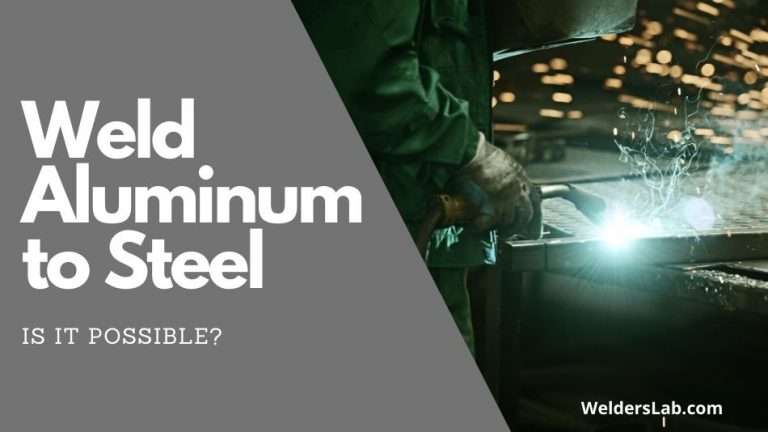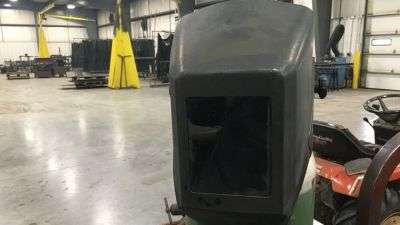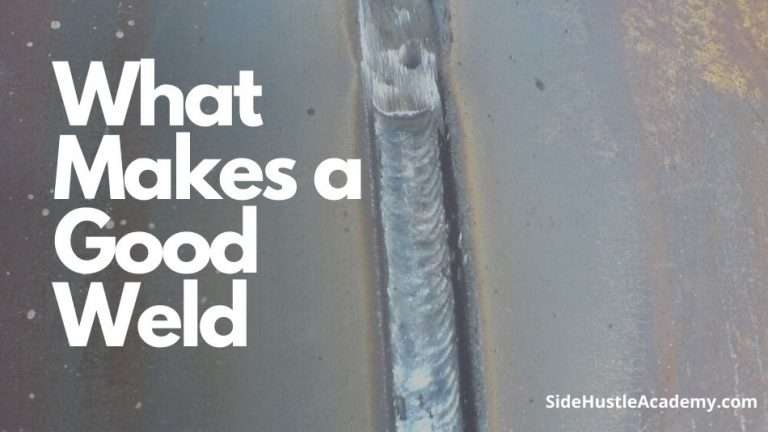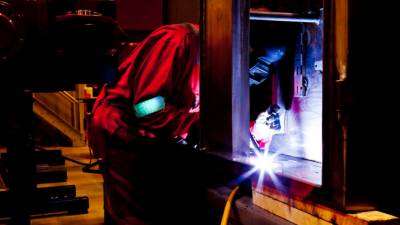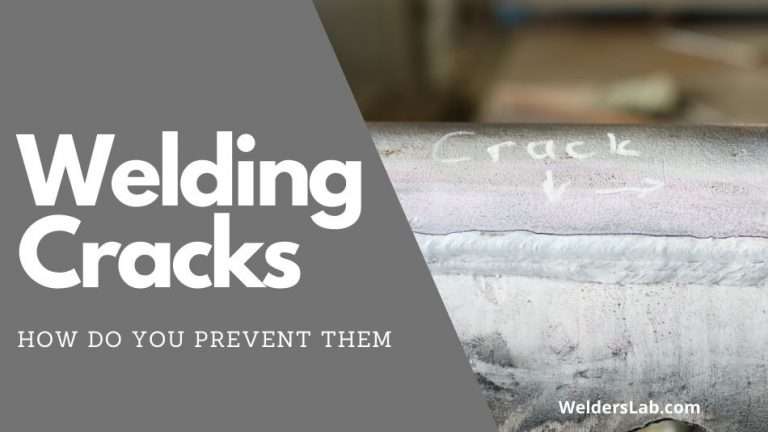What Shade Lens Should You Use For MIG Welding – A Complete Guide
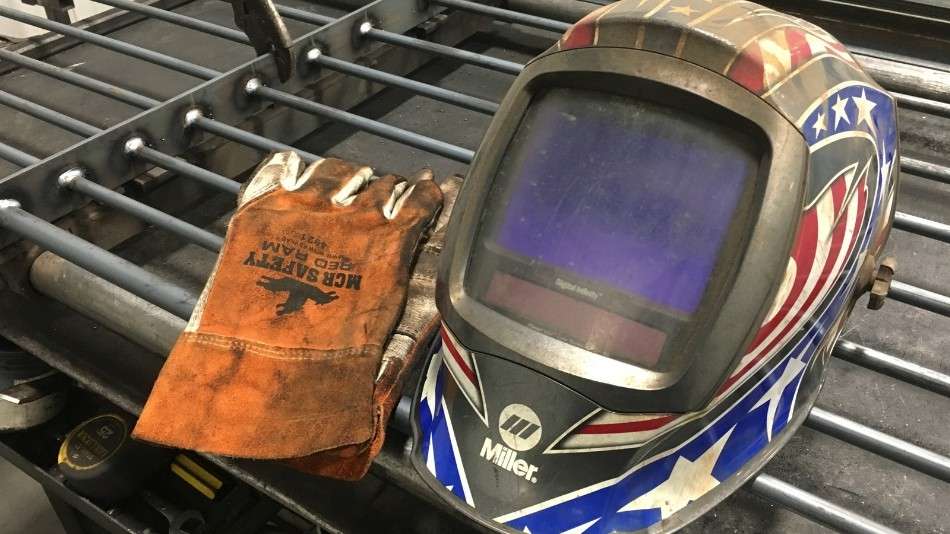
When I was first getting started as a welder I often wondered what shade lens I should be using for my welding helmet so I don’t burn my eyes from the welding flash.
What shade of welding lens should you use for MIG welding? It’s recommended that you use a shade 10 to a shade 13 welding lens to prevent flash burn on your eyes. The higher the number the darker the shade will be. However, the more amperage you are using the darker the shade you will want to have to avoid burning your eyes.
Over the years I’ve burnt my eyes several times from welding and not having the correct welding lens can solve a lot of the problems. In this article, I’m going to cover everything you should know about welding lenses for MIG welding and how to protect your eyes.
Why You Must Have the Right Shade Lens for MIG Welding
When it comes down to it welding lenses have one major and important function, to protect your eyes from getting burnt.
I’ve personally burnt my eyes several times over the years and it’s not a fun thing to live through. People often say that it feels like hot sand in your eyes and you can’t get it out are correct.
It’s the worst feeling in the world to wake up in the middle of the night only to realize that you’re eyes are burnt.
Fortunately, there is a way to prevent this from happening to you, and that is to wear the correct shade lens while welding, but oftentimes people don’t know what shade they should be wearing.
But there are two things you must understand about the welding lens before you pick one.
#1 The Shade Number
To start, when it comes to MIG welding you’ll typically be anywhere from a shade 10 to a shade 13 lens. A lower shade number will let more light through the lens whereas a higher number will let less light through the lens.
So if you have a shade 10 it will show lighter and a 13 will show less light filtering more of it out.
#2 The Level of Amperage
The second thing you need to understand is that the shade lens you pick depends on the amount of amperage you are running at.
The more amperage you are running the darker the shade you’ll want to use. The less amperage you have the lighter your shade can be.
The reason for this is that a higher amperage will be a lot stronger and as a result, you will need a darker lens to filter out more of the harmful radiant light.
So which lens should you have in your helmet?
How to Choose the Right Lens Shade
Below I constructed a simple chart to help you understand what kind of shade you should be wearing.
The chart below is for someone welding your typical mild steel with a MIG welder using solid wire.
| Type of Welding | Amperage | Lens Shade |
| MIG – Mild Steel | 80 to 100 | Shade 10 |
| MIG – Mild Steel | 100 to 175 | Shade 11 |
| MIG – Mild Steel | 175 to 300 | Shade 12 |
| MIG – Mild Steel | 300 to 500 | Shade 13 |
At the very minimum, you should be using a shade 10 for welding with less amperage and thinner metals.
However, you might be wondering what shade number lens should you be using if you’re welding with flux core.
| Type of Welding | Amperage | Lens Shade |
| MIG – Flux Core | 125 to 175 | Shade 10 |
| MIG – Flux Core | 175 to 225 | Shade 11 |
| MIG – Flux Core | 225 to 275 | Shade 12 |
| MIG – Flux Core | 275 to 350 | Shade 13 |
With flux core, it can burn a lot brighter and require a stronger shade lens at lower amperages.
Now let’s look at another MIG welding aluminum steel.
| Type of Welding | Amperage | Lens Shade |
| MIG – Aluminium | 80 to 100 | Shade 10 |
| MIG – Aluminium | 100 to 175 | Shade 11 |
| MIG – Aluminium | 175 to 250 | Shade 12 |
| MIG – Aluminium | 250 to 350 | Shade 13 |
As you can see different types of metal at varying ranges of amperage require different shade lenses when welding.
The Exception
The one exception to all of this that most people don’t consider is how sensitive your eyes are to welding. For some people, their eyes can’t take the bright light from welding even if they have a shade 13 lens to filter out most of it.
How do I know this?
As a good example, I have an employee that deals with this on a constant basis. He wears a shade 13 lens and does everything he can to cover his face and eyes and deals still deals with dry and somewhat burned eyes on a regular basis.
However, if this is an issue there is another welding lens option.
What is the Darkest Shade Welding Lens
The darkest shade lens is actually shade #14. However, this shade is not commonly sold with most welding helmets because it is so dark and filters out a majority of the light.
The #14 shade lens is typically used for those with very sensitive eyes or for looking at the sun or even a solar eclipse. You can look here to find a #14 shade lens.
If you have an auto dark helmet they typically only go up to shade #13 but they do make some specialized auto dark helmets that do go to shade #14.
How Do I Know My Welding Lens is Safe?
One of the last things you might be wondering is how to know if your welding lens is safe?
The simple way to know is to look for welding lenses that met the ASNI Z87.1 qualifications. I talk more about this in my complete buyer’s guide on welding helmets here.
Basically, this qualification is for all auto-darkening helmets that meet specific criteria that will filter out light properly. Most auto dark helmets fall under this qualification but it’s always best to be safe rather than sorry.
Auto Dark Helmets Vs Passive Helmets Lens Shade
There are two basic helmets types of welding helmets you can choose from when it comes to protecting your eyes. The first is an auto-dark welding helmet and the second is a passive welding helmet.
#1 Auto Dark Welding Lens
An auto-dark helmet does not actually contain a lens but rather is controlled by a sensor on the front of the helmet. Once the flash from the weld hits the sensor it darkens the shade to the darkness it is set to.
Now don’t worry the switch from clear to dark is nearly instantaneous and will not flash burn you. Typically change will happen in 1/12,000 of a second or faster.
The benefit of this kind of helmet is that it allows you to keep your helmet down without having to flip it up and down when welding. It’s also nice if you’re doing a lot of short welds.
On the
#2 Passive Welding Lenses
Passive welding lenses are typically a piece of glass or plastic coated to a specific level to help it filter out the light. Unlike auto-dark helmets, passive welding lenses always stay dark.
For many years this was the type of welding helmet I used before switching to an auto dark helmet.
The benefit of these helmets is that they always stay dark and are great helmets for doing long passes. They always stay dark and don’t rely on batteries or sensors which can go out and in some cases cause a flash burn.
The downside to a passive lens is that they can cause you to always be moving your hood up and down especially when doing short runs.
Issues to Be Aware With Welding Lens
One of the biggest issues I see with the welding lens is that people often think because I have the darkest lens or the best auto-dark helmet I’ll be safe from burning my eyes and this may not always be the case.
In this section, I’m going to share some issues that you consider when using a welding helmet and also what you can do to prevent burning your eye’s face, and neck.
#1 Test Your Auto Dark Lens
Almost all auto dark lenses come with a battery in them and from time to time that battery can run out. When this happens the shade may not be as dark or even not work at all.
If this happens you’ll want to change the battery before using it. Typically the battery is a coin battery that you can get at most hardware stores.
However, the real problem is if the battery gets low and the shade doesn’t get as dark as it’s supposed to. It will be harder to notice this and if you’re supposed to be using a shade 13 and it’s only hitting a shade 9 it could potentially burn your eyes.
#2 Check for Cracks in Your Lens
Another thing to look for is cracks in your lenses. If you’re like me and a little clumsy you can drop your welding helmet and this could cause a hairline crack to form.
The problem with this is that you probably won’t notice it and it could be letting in some of the harmful light burning your eyes and face without even realizing it.
So take a moment and check your lens over every day before you start welding and check for any cracks and that the lens is safe to weld with.
#3 Check Your Helmet
You’ll also want to check your helmet while you’re at it. A lot of people tend to check the lens for cracks or if it’s working right but they forget to look to see if the actual helmet has a crack in it.
This happened to me back several years ago. I had a decent helmet and I checked over before I started welding with it. I then proceeded to weld with it all day.
Later on that night you guessed it my eyes were fried to a crisp. The reason I burnt my eyes was that I had a slight crack in my helmet and I put a piece of duct tape over it thinking that would stop the harmful light and I was wrong.
If you have a crack in your helmet don’t try to patch it up. It likely won’t hold and will burn your eyes as a result.
Safety Tip: If your helmet has a crack in it just buy a new helmet. It’s not worth the pain and aggravation. Besides
that your eyes will thank you for it.
#4 Make Sure Your Helmet is All the Way Down
Finally, my last bit of advice here is to make sure that your welding helmet is all the way down when you are welding. This means your helmet should be all the way against the front of your chest.
What I find happens to some people is that it can still burn them because the light is indirectly reflecting off of their table and shining right up in their hood.
Most people think that you have to be directly looking at the weld to get burnt and this isn’t true. You can get burnt by the reflection as well.
If this is a problem for you look for a longer welding helmet and keep your hood tight against your body when you weld.
Specialized Lens Shades
Finally, if you’re planning to weld using a TIG welder,
#1 TIG Welding
The type of welding is TIG welding. You can learn more about the differences between TIG and MIG welding in the article I wrote here.
| Type of Welding | Amperage | Lens Shade |
| TIG – Mild Steel | 5 to 20 | Shade 9 |
| TIG – Mild Steel | 20 to 30 | Shade 10 |
| TIG – Mild Steel | 30 to 100 | Shade 11 |
| TIG – Mild Steel | 100 to 150 | Shade 12 |
| TIG – Mild Steel | 150 to 250 | Shade 13 |
#2 Stick Welding
Stick is another type of welding that uses a flux-covered rod attached to a clamp. It’s one of the oldest types of welding used typically for outdoor situations.
| Type of Welding | Amperage | Lens Shade |
| Stick Welding – Mild Steel | 20 to 40 | Shade 9 |
| Stick Welding – Mild Steel | 40 to 80 | Shade 10 |
| Stick Welding – Mild Steel | 80 to 175 | Shade 11 |
| Stick Welding – Mild Steel | 175 to 300 | Shade 12 |
| Stick Welding – Mild Steel | 300 to 500 | Shade 13 |
#3 Plasma Welding
Plasma welding is a lower amperage type of welding. It’s not a very popular type of welding but still requires a welding helmet to use or you could burn your eyes.
| Type of Welding | Amperage | Lens Shade |
| Plasma Welding | 10 to 15 | Shade 9 |
| Plasma Welding | 15 to 30 | Shade 10 |
Related Questions
#1 What shade lens should you use for plasma cutting? Just like welding, it all depends on the amperage you are cutting. For lower amperage machines between 40 and 80 amps, a shade 9 lens will work. For high amperage machines, you will want something between shade 10 to 13.
#2 What lens shade is suggested for light oxy-fuel cutting? For oxy-acetylene cutting a shade 5 lens is fairly typical since the flame does not get nearly as bright as a MIG welder does.
#3 How Long Do MIG Welding Helmets Last? Like most things, it all depends on how much the person uses the helmet, and how well they take care of it. For most people, they can get 3 years but I’ve also seen people who only get a year out of them due to poor maintenance.


